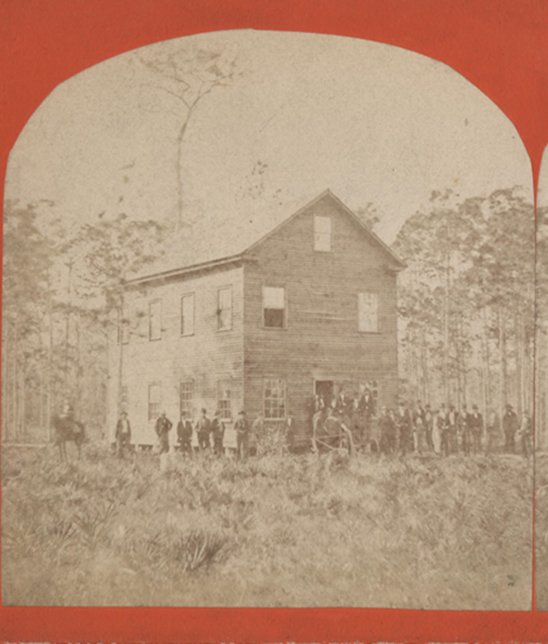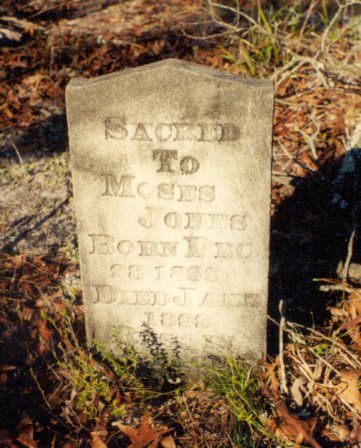Celebrate Clay History
County Jailer Moses Jones faced an angry crowd
MIDDLEBURG – Moses Jones was worried. It was a hot June night in 1871. He was the county jailer working in the wooden jailhouse at Middleburg – also known then as Webster, the …
This item is available in full to subscribers.
Attention subscribers
To continue reading, you will need to either log in to your subscriber account, or purchase a new subscription.
If you are a current print subscriber, you can set up a free website account and connect your subscription to it by clicking here.
If you are a digital subscriber with an active, online-only subscription then you already have an account here. Just reset your password if you've not yet logged in to your account on this new site.
Otherwise, click here to view your options for subscribing.
Please log in to continueDon't have an ID?Print subscribersIf you're a print subscriber, but do not yet have an online account, click here to create one. Non-subscribersClick here to see your options for subscribing. Single day passYou also have the option of purchasing 24 hours of access, for $1.00. Click here to purchase a single day pass. |
Celebrate Clay History
County Jailer Moses Jones faced an angry crowd
MIDDLEBURG – Moses Jones was worried. It was a hot June night in 1871. He was the county jailer working in the wooden jailhouse at Middleburg – also known then as Webster, the county seat at that time. The jail was in poor shape. It was old and rickety, the site of several escapes usually done successfully by inmates digging a tunnel in the earthen floor under and out of the cells.
As he sat there that night, jingling the jail keys in his hand, escapees were not Moses Jones’ worry that night. He was worried about who would break into the jail and take his prisoner, Frank Perry.
Perry stood accused of the sexual battery of a young pregnant woman named Caroline Green McLelland. According to her, she had been home alone at her house near Doctors Inlet, while her husband, Hiram McLelland, was voting at Webster. Perry snuck up and ambushed her, she said. He and his dog tore at her clothes. Once it was over, Perry allegedly took off and left her to walk in a “terrible state” the two miles to her mother’s home.
Upon learning of the alleged crime, Sheriff Henry Bradford and a posse of men – JQ Adams, Doyle, Jamison, John Green, McLelland (the husband) and Joe Jenkins – began the search for Perry. He was found holed up at his own house – not the smartest move to avoid capture. Perry was promptly arrested and taken to the county jail, where Jones, the first Black jailer in Clay County, had the dangerous duty of keeping Perry, a young Black man, safe and in jail.
Jones was originally from Virginia. He and his wife Caroline moved to Clay County around 1870. At the time of the Perry incident, Moses was 39 years old and the proud father of five children. He and Caroline would go on to have three more. Moses made a living cutting wood. The jailer job was just another way to put food on the table. From the start of Moses’ life in Clay County he was active in his community. The records at the Clay County Archives show he voted in each election, paid taxes and owned land. He was sued once over a business contract, a suit he lost. In 1884 he and dozens of other citizens signed a petition to allow T.T. Edgerton a liquor license. This was way before Clay County voted to be “dry” county in 1904. Jones was a respected and trusted member of the community, hence his job as a jailer. He owned a homestead out near Peter’s Creek Road.
It was long after dark when Moses’ ears tuned in on the sound of dogs baying and the murmur of men’s voices approaching in the distance. As the ruckus got closer, he could see lit torches. What looked like little fireflies in the distance soon turned into a large crowd of angry men. They were armed to the teeth, too. They had come for Frank Perry. The smell of vigilante justice filled Jones’ nostrils.
The leader of the mob confronted Jones and said, “Give me the keys or it’s your life!”
Moses, thinking of his wife, his children, and his own neck, dropped the keys into the outstretched hand of the mob leader. Shortly thereafter, shots rang out. Morning came and revealed that alleged rapist had been shot dead. No one complained and some were even grateful that Perry had been shot “relieving the already bankrupt state of the burden of prosecution.”
It is unknown whether Moses Jones kept his job after that fateful night. One may even speculate that he was deliberately left to guard Perry. Jones kept on cutting wood though. His first wife died and then he married Nancy Hogans in 1908. He had no more children. By 1920, he was 88 years old, but it is unknown when he died. There is no tombstone for him, but one can surmise that he is surely buried in the Moses Jones Family Cemetery located near his former homestead on Peter’s Creek. The exact spot where crime suspect Perry was laid to rest also is anyone’s guess, and we’ll never know if he was guilty of the crime for which the mob abruptly killed him.











